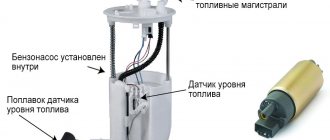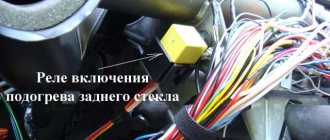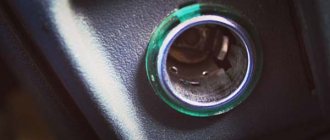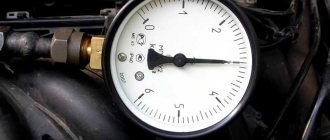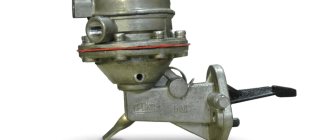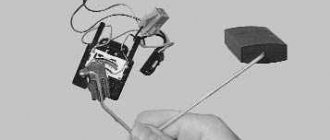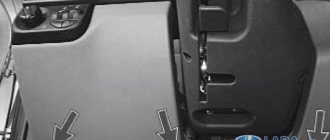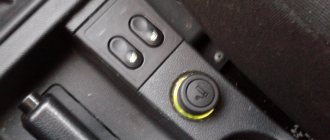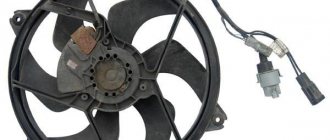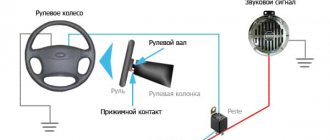Reasons why the fuel pump does not pump gasoline when the ignition is turned on
The gasoline pump serves to supply fuel from the tank and maintain the pressure in the line necessary for the operation of the injectors. Interruptions in the supply of gasoline lead to a disruption in the composition of the air-fuel mixture, which leads to poor-quality combustion and misfires, the engine begins to stall, respond sluggishly to the gas pedal or stall. If the fuel pump (FP) does not pump, the engine will not start at all.
Gasoline supply problems - common symptoms
Malfunctions in the operation of the fuel supply system are conventionally divided into 2 categories:
- The flammable mixture is not supplied to the cylinders at all.
- Fuel is supplied irregularly or with insufficient pressure.
In the first case, the engine does not start and does not jam when the starter rotates, which means it does not show any signs of life. In such a situation, it is always easier to determine the cause of the breakdown.
When fuel enters the cylinders in insufficient quantities, this is manifested by the following symptoms:
- starting the power unit “cold” is very difficult, the engine crackles and “sneezes”, it fires after 3-10 attempts;
- idling is unstable, the engine “throws”;
- dynamic acceleration becomes impossible - sudden opening of the throttle causes prolonged braking and deceleration;
- when the driver releases the gas pedal, the engine often stops;
- The car struggles to climb uphill and accelerates slowly when fully loaded.
The cause of the above phenomena may be a faulty fuel pump or other system components, and the main symptoms are almost the same. To make an accurate diagnosis, you need to understand how the car's power system works.
Signs of fuel pump malfunctions
The main symptoms of fuel pump failure, as well as malfunctions in its operation, are:
- the car starts with difficulty, the engine runs unstable, there are dips, jerking when pressing the gas pedal, etc.;
- the pump does not pump after turning on the ignition, does not turn the starter and does not pump the fuel pump, the engine does not start;
There have also been cases when the fuel pump stops pumping while driving. In such a situation, the engine begins to malfunction and stalls immediately after the remaining gasoline in the fuel line is used up. The problem can occur either regularly or periodically.
Missing plus
The main reasons for the lack of a plus may be:
- Fuse or relay faulty. How to check was described above. If these parts fail, it is enough to simply replace them;
- Contacts are oxidized or damaged. You can see this with the naked eye. After cleaning from contaminants, the fuel pump should start working;
- Broken wiring. It is necessary to find the location of the break and eliminate it;
- The engine control unit blocks the fuel pump. There may be various errors on the on-board computer or during diagnostics with a scanner, as well as other symptoms of incorrect operation;
- The car alarm is not working properly and blocks the pump.
Most problems are easy to detect and fix yourself. But the last two require the intervention of a competent auto electrician. DIY repairs will only make the problem worse.
The fuel pump does not work, the relay turns on.
Checking relay power.
In the case when the fuel pump relay turns on when the ignition is turned on, but the pump itself does not work, you need to check the power at terminal 87 of the fuel pump relay. To do this, touch terminal 87 of the relay socket with the output of the control lamp connected to the vehicle ground, and the lamp should light up. If the lamp does not light, it means the fuse has blown or there is a break in the wire.
If there is power at terminal 87, you should remove the relay from the socket, and instead place a jumper between pins 87 and 30. In this case, if the pump and connecting wires are working properly, the pump should start working and if this happens, the relay should be changed. If the pump does not start working, then, without removing the jumper, you need to touch the power wire on the fuel pump with a test lamp connected to the vehicle ground.
Checking the fuel pump power circuit.
If a submersible pump is installed on the car as part of the fuel module, you need to remove the connecting connector and touch one of the thick wires. When you touch one of them, the indicator lamp should light up. If the lamp does not light up on any of the wires, then it is necessary to eliminate the break in the wire from the fuel pump relay to the module connector or the pump itself, if the pump is of a remote type. One of the reasons for the break may be the anti-theft blocking of an installed non-standard alarm system.
In the case when the test lamp lights up on one of the thick wires of the connector or one of the terminals of the remote pump, you need to connect these terminals with a test lamp to each other. In this case, the control lamp should light up. If the lamp does not light, it is necessary to eliminate a break or poor contact in the wire connecting the pump to the vehicle ground.
If, when checking the wires and relay for turning on the fuel pump, no malfunction is detected, the electric motor of the fuel pump or its connection to the module connector is faulty. It is not difficult to find the cause by removing the fuel pump module from the tank. If there is poor contact with the connector, melting of the plugs will be visible. If melting is not noticed, then to check the pump itself, you can connect it to the battery. It should be taken into account that operating a submersible pump without liquid will damage the pump. A faulty pump should be replaced.
Missing mass or plus?
The 4's fuel pump runs on electricity. Therefore, if there is no power to the VAZ 2114 fuel pump, you need to determine where exactly the circuit is broken. After all, both mass and plus may be missing.
VAZ 2114 fuel pump power supply circuit
Car enthusiasts sometimes have a question about how to check the power supply to the VAZ 2114 fuel pump. You need to start with something simple. To do this, you need to turn the ignition key and listen for a characteristic click. It is familiar to every driver. The fuel pump always starts with this sound.
If there is no sound, you need to check the relay and fuse. They are located on the passenger side, under the side panel. To get to the electrical components, remove the plastic trim on the passenger side.
To check the fuse, you need to take a known good fuse element and put it in its place. If everything worked, then that was the reason. A faulty relay can be indicated by the absence of a click when turning the key. These electrical elements sometimes exhibit external damage that is visible to the naked eye. But, if replacing the relay did not help, then you should look for the reason further.
To understand why there is no power, you need to do the following:
- Raise the back seat and find the gas filler door. It is held on by self-tapping screws;
- After removing the hatch, three terminals will be visible, two of which are positive and one is negative;
- We check the power by connecting the ends of both wires alternately to plus and minus. If the light is on, it means there is power. When the lamp is not lit, it is absent.
If the lamp is on and the pump is not functioning, you need to check the voltage. To start the VAZ 2114 gasoline pump, a voltage of 10 volts or more is required. Measurements are carried out by the tester in voltmeter mode.
Low voltage indicates:
- Low battery. Therefore, you need to check its charge level;
- Problems with the generator. But they are usually accompanied by a number of symptoms that should have been noticed earlier;
- Oxidation of connectors. This can be noticed upon visual inspection. Cleaning will easily solve this problem;
- Broken wiring. You will have to call it with a tester to find the location of the damage. If it is difficult to find a break on your own, you should contact a car service.
Useful : Step-by-step instructions for replacing the fuel pump on a VAZ 2114
If the fuse and relay are working, the voltage is normal and there are no breaks, you should check the fuel pump. This part cannot be repaired. If it breaks, it is replaced. It also cannot be ruled out that the pump is blocked by a car alarm or similar additional equipment, if installed. It is better to entrust the inspection of such devices to an auto electrician.
Signs of a fuel pump malfunction
Engine won't start
This is the main symptom of a faulty fuel pump. In the summer heat, a dying fuel pump may appear. The junction of the impeller with the rotor axis expands, and it rotates. You should check the fuel pressure from the rail and from the pump directly.
The service life of the fuel pump is determined by the owner's use of the vehicle. What is required for the fuel pump to last longer and not fail:
- Check the presence of water in the tank. For prevention, pour any pure alcohol into the tank. It mixes with water and burns out through the exhaust. There is a moisture displacer available in stores. Contains isopropyl alcohol.
The main causes of fuel pump failure
The coarse filter is clogged
Old and new fuel pump coarse filter
A clogged filter is brown in color because its cells are completely clogged with sediment.
The most common problem that causes the fuel pump to not pump is a clogged coarse filter. This filter is usually installed in the tank immediately before supply to the pump itself. This is where primary fuel filtration occurs. This malfunction can be determined visually. A clogged filter is brown in color; the cells in its mesh are almost completely clogged with sediment. Even a working pump cannot pump fuel through such a filter; as a result, the required pressure is not provided in the system. The coarse filter must be replaced. Its cost is low (about 50 rubles). However, replacing it takes time and a set of tools. First you need to remove the fuel pump itself, which is usually screwed to the tank. Before removing the fuel pump, you need to disconnect the terminal on the battery. Then the fuel pump is removed and the filter is removed from it. The filter itself is installed on the pump manually, without tools. It is recommended to change the coarse filter every 20 thousand. However, it can become clogged much faster. This depends on the quality of the fuel and the condition of the fuel tank. It only takes one refuel with low-quality fuel at an untested gas station to clog the filter. It can also easily become clogged with rust if the tank is already old and susceptible to corrosion.
The fuel pump does not pump when the ignition is turned on
First of all, you need to check the fuel pump terminals and the power to them. In the photo, the terminals were worn out, which caused the contact to close and the fuel pump to melt.
What to do if such a situation arises. The verification algorithm is described below. Briefly check the presence of voltage at the fuel pump terminals. Based on this, further conclusions are drawn.
Checking the fuel pump circuit
Checking the power circuit.
If you know that the pump is working (to do this you need to gain access to it, remove it and connect it to an alternative power source), then the reason should be looked for in the car's wiring. To do this, the control light should be connected to the gray wire that goes to the pump.
This is exactly what is a plus. If the light does not light up, then power is not supplied to the unit.
Checking relays and fuses
Here you should initially check the fuses and relays. The fuse box is located behind the left of the driver under the dashboard, and therefore is not easy to access. You will have to unscrew two bolts and remove the decorative protective cover.
If these components are faulty, they should be replaced. The relay is checked in the same way as the pump, by connecting a test light to the input and output . The fuse can be checked visually.
The fuel pump relay is marked with a green arrow.
If the car still does not start, you should check the connector block. It is located behind the driver's side fuse box in the passenger compartment. Here you can also use a test light or tester, with which you can check the voltage at the inputs/outputs.
Fuel pump diagnostics
If the gas tank is full, the battery is in good condition, the spark plugs are dry and give a spark, and the starter rotates the engine, then the reason is the fuel pump. The most common reason is that after turning on the ignition, there is no power supplied to the fuel pump. In the same way, it manifests itself when the car is moving, when the power is lost and the engine begins to stall. Another important nuance is the supply of the required amount of fuel.
The pump may be working, producing a hum and buzzing, that is, power is supplied, but not producing the required pressure.
The pressure in the fuel system with a working fuel pump is considered normal to be more than 3 bar. This pressure is collected in the fuel rail and corresponds to a value of 300 kPa. To check the condition, you need to take a pressure gauge and measure the pressure in the fuel rail, taking into account those indicators that are considered normal for each individual model.
For a VAZ-2110 with an injector, the pressure at the moment the ignition is turned on should show no less than three atmospheres, at idle speed - 2.5, and when the gas pedal is pressed - from 2.5 to 3 atmospheres. This method allows you to accurately determine:
- Failure of the rail pressure regulator.
- Fuel pump malfunction or decreased performance due to wear.
- Severe contamination of the filter or mesh.
A decrease in pressure leads to the fact that the engine does not start or starts with difficulty, it begins to stall, and dips appear during operation. If the pump is to blame, then the fuel pump coarse strainer may be clogged. In this situation, there is no need to change the entire unit; you can clean the mesh or install a new one. If you suspect that the fuel pump is not receiving power, you need to turn on the ignition and listen. A slight buzzing or hum should be heard when the fuel pump is operating. And if you don’t hear anything, then there is a problem with the operation of the fuel pump or the wiring to it.
The main list of reasons why the fuel pump on a VAZ-2110 car does not pump includes:
- fuse malfunction;
- non-working relay;
- motor failure;
- oxidation of contacts in the wiring leading to the fuel pump;
- fuel pump failure.
The principle of operation of the fuel pump
The operation of the pump is controlled by a controller. At the same time, its control scheme is quite interesting. There is no pressure sensor in the car system, and therefore it is maintained by a pressure regulator. It is located near the pump in the tank.
New and old fuel pressure regulator
The regulator has a valve that can open only at a certain moment, namely when there is sufficient pressure in the system (4 Bar).
In this case, fuel will not flow into the return line either. When the ignition is turned on, the pump begins to pump fuel into the system, after which the regulator valve opens and remains in this position throughout the engine operation.
How to check the fuel pump?
The most reliable diagnostic method is to check the gasoline pressure in the fuel line. Ready-made kits with adapters for connecting the most popular power systems are available for sale. The device can be assembled manually from a pressure gauge with a scale of up to 6 kg/cm2, a hose, adapters and couplings.
To check the pump you will need:
- Relieve the residual gasoline pressure in the line.
- Connect the pressure gauge to the engine power supply. On some vehicles, a standard connector is used to check the pump's functionality.
- Turn on the ignition. A value of 3-4 kg/cm² is considered normal. The exact parameters for this engine can be found in the repair and operation manual.
- Start the engine. An efficient fuel pump creates excess pressure (about 7 kg/cm²), which the regulator releases into the tank. Therefore, under all engine operating modes, the pressure in the ramp should not deviate significantly from normal values. During diagnostics, you should simulate the conditions under which symptoms of a fuel pump malfunction most often appear (engine temperature, load, etc.).
If the measured value is below the permissible value, the fuel pump in the car is damaged or the fine filter is clogged. In this case, the fuel pump heats up, which can lead to melting of the casing and fire of the electric motor.
How to remove the fuel pump Cherie Amulet
- Be sure to turn off the power to the on-board electrical system. We simply remove the negative terminal from the battery .
- Open the trunk and raise the flooring . For ease of work, you can remove the rolling tool and the tool lying next to it.
- Open the cover behind which the fuel module is hidden. The lid is held on by 3 screws.
Fault repair
If there is no power to the block, we begin troubleshooting by checking the fuses of the fuel pump power supply circuit. They are located on a special separate panel located in the car interior under the glove compartment.
Fuel pump fuse VAZ 2107
The middle relay and fuse F3 located nearby are responsible for the operation of the fuel pump.
1 – fuse, power circuits of the main relay;
The principle of operation of the fuel pump
The operation of the pump is controlled by a controller. At the same time, its control scheme is quite interesting. There is no pressure sensor in the car system, and therefore it is maintained by a pressure regulator. It is located near the pump in the tank.
New and old fuel pressure regulator
The regulator has a valve that can open only at a certain moment, namely when there is sufficient pressure in the system (4 Bar).
In this case, fuel will not flow into the return line either. When the ignition is turned on, the pump begins to pump fuel into the system, after which the regulator valve opens and remains in this position throughout the engine operation.
How to determine if a fuel pump is faulty
Be that as it may, most of the signs indicating a fuel pump malfunction may indicate problems in other systems and components of the machine. The car is malfunctioning - maybe the spark plugs, maybe the ignition, maybe some sensor is acting up. Extraneous noise in the engine can generally be caused by various breakdowns. Even when the engine stalls immediately after starting, you cannot blame only the fuel pump. For example, without readings from the crankshaft position sensor, the ECU can stop the pump, which is quite a normal car reaction to such a problem. And even a decrease in pressure in the system can be caused by leaks in the fuel lines, breakdown of the bypass valve and other failures.
